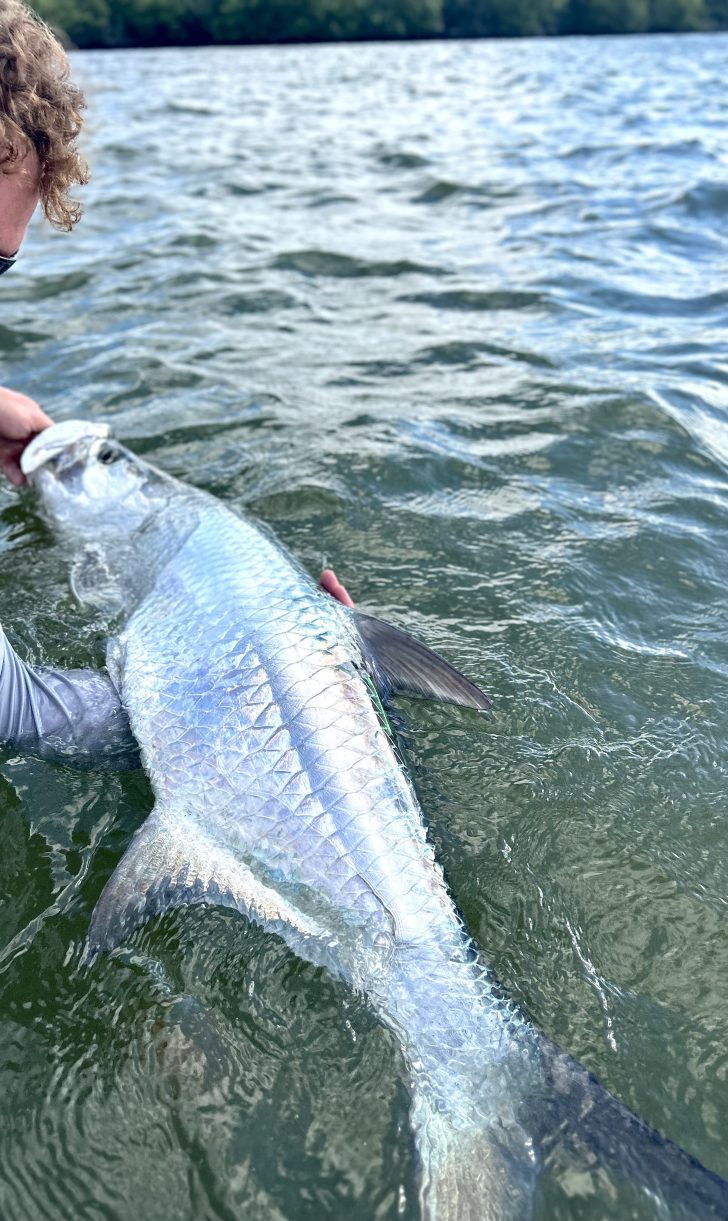by: Caitlyn Gatrell
It’s summertime in Southwest Florida and you know what that means – tarpon are on the prowl! This species is hot around this time of the year as they make their way into the area as part of their annual migration. While there is usually tarpon found year-round in Southwest Florida, the numbers are significantly higher in the summer months. I can say that for myself, August usually is the prime time for when we catch our tarpon in the Ten Thousand Islands area.

Getting tarpon to bite can be tricky at times, but we have used a variety of bait that has been allowing opportunities at hooking up to some. We have used a mix of mullet, pilchards, threadfin herrings, crabs, as well as some artificial baits such as topwater lures, that have all been a help. Once you hook into one though, be prepared for a ride as their energy level is through the roof.
Something new I have incorporated into this year is tagging fish. It has a beneficial purpose, as it allows us to be able to look at certain paths or behaviors these fish have taken, as well as noting any new changes that may have occurred to them or their habitats. Overall, it benefits conservation and research purposes in our saltwater fisheries.
I was able to tag my first tarpon this year, which was a unique opportunity. We had along some friends, and one of us was able to hook into a nice sized tarpon. After the drag screaming fun, we got the fish to the boat and prepared for the tagging process. As the fish was small enough to be on the boat, we brought it onboard and quickly yet carefully inserted the tag into the skin. It can be a little difficult tagging the bigger species, so be sure to have a good grip on them. After completing the tagging, we then removed the hook and placed the tarpon into the water, preparing for the recovery.
It’s always important to ensure a good revival for your fish, especially the big ones that produce longer and tiring fights. Once we were able to get a good flow of water through its gills and got that firm kick from the tarpon, we let her go and watched her dive back down under the surface.
